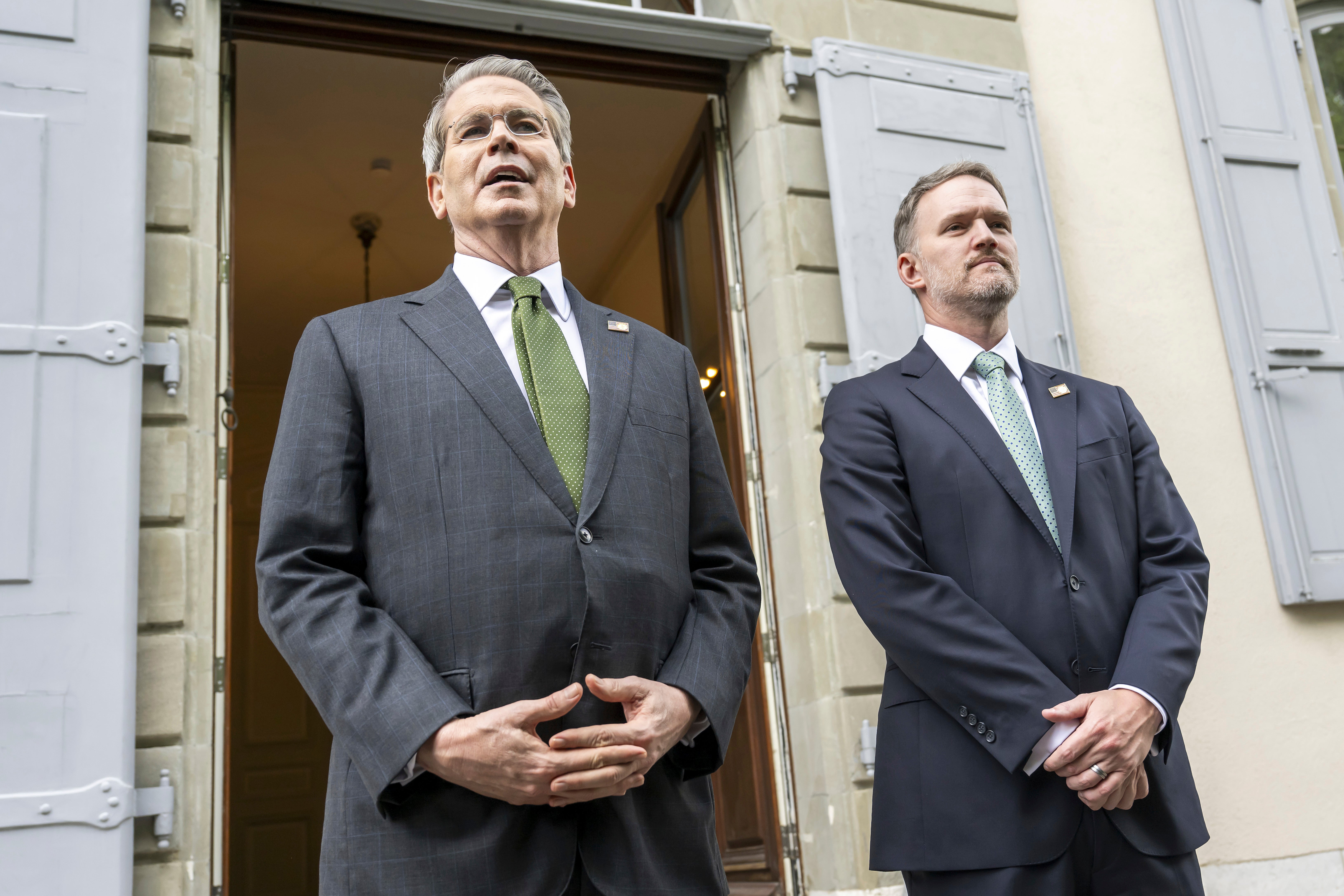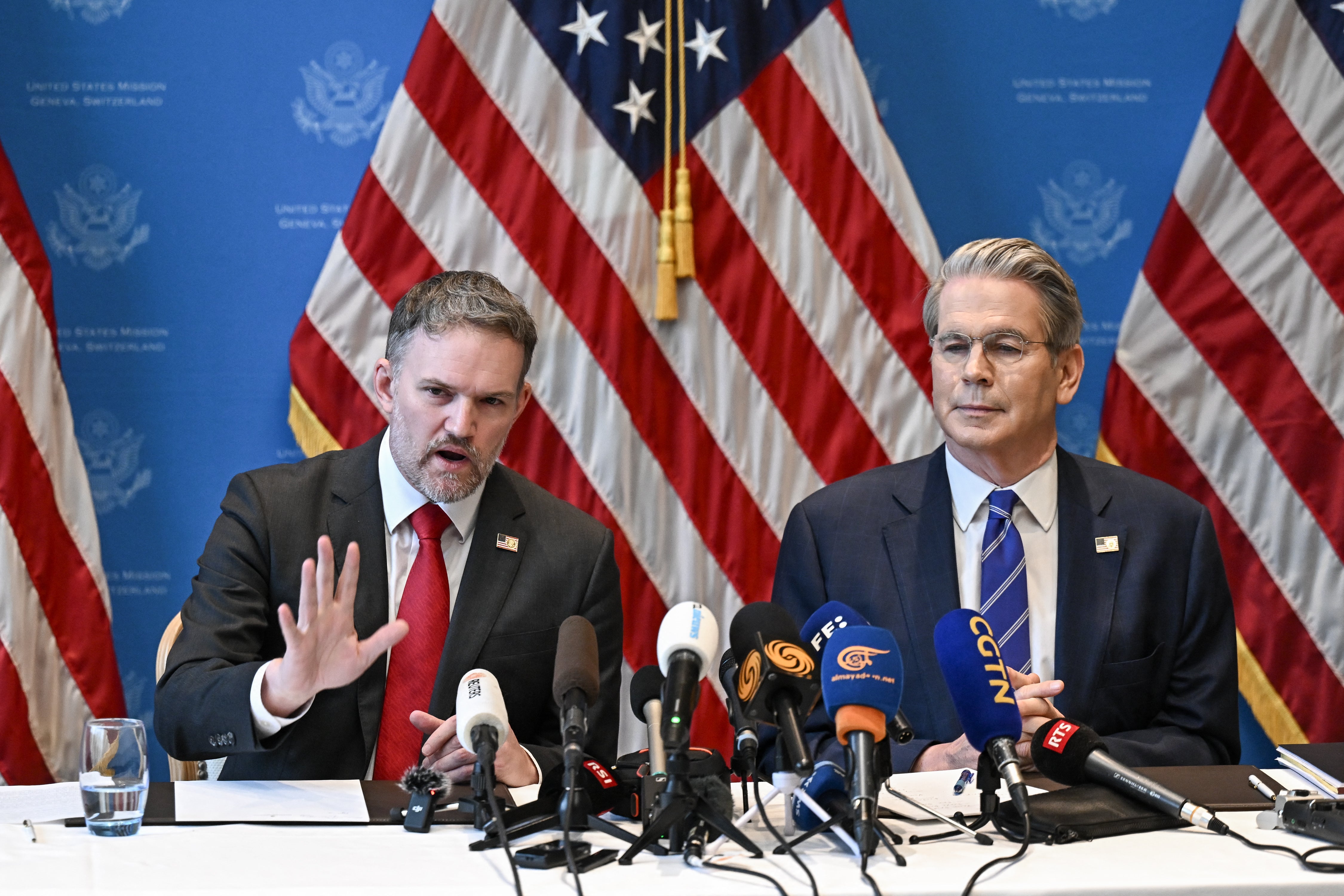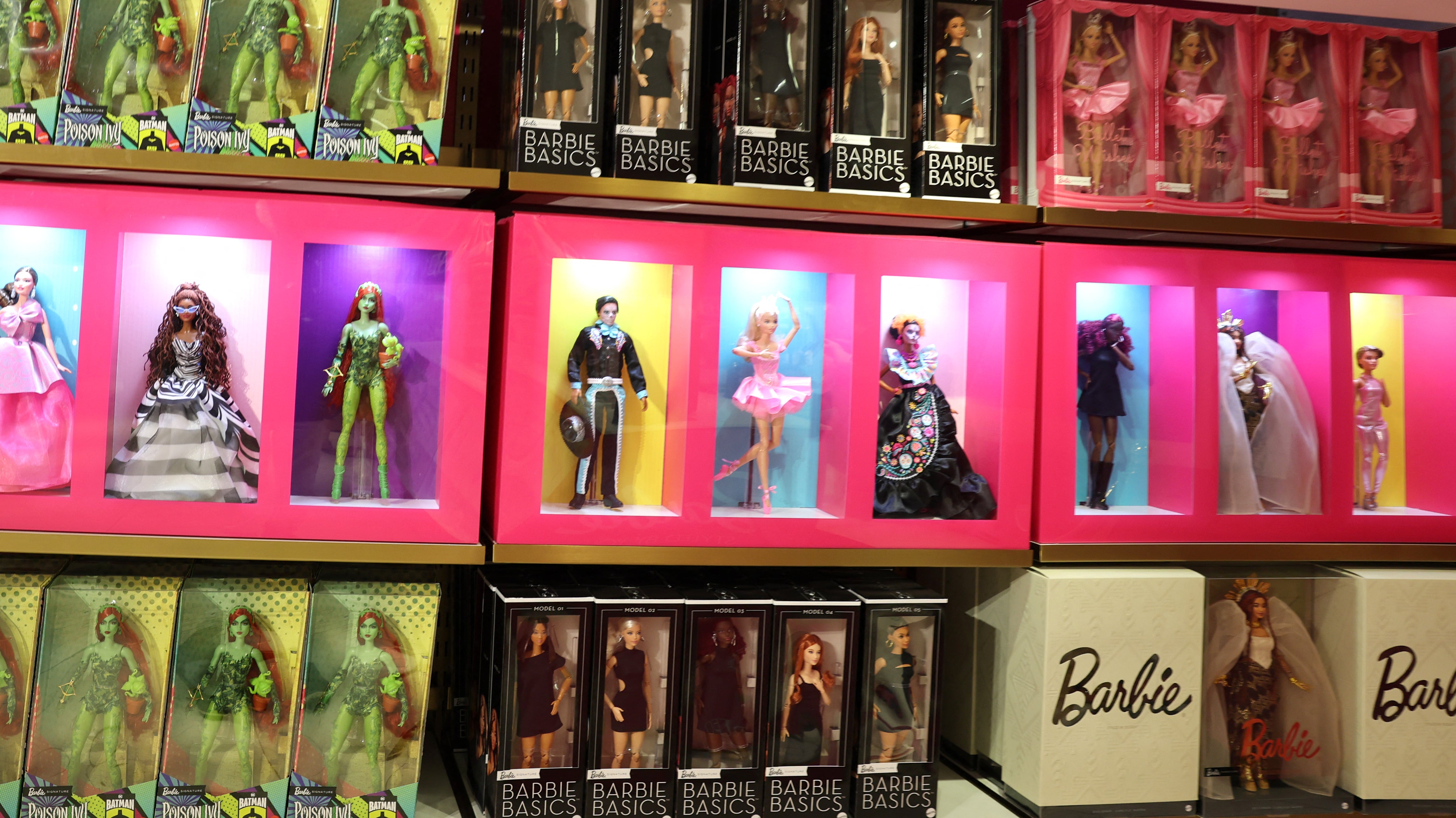ARTICLE AD BOX
A trade war that threatened to upend the global market and tip the US into recession has been temporarily paused with an agreement between the US and China to temporarily slash tariffs, though questions remain over its lasting stability over unresolved key issues.
After a weekend of marathon negotiations to break the trade standoff in Geneva, the US and China announced they would suspend their respective tariffs for 90 days as negotiations continued.
Under the agreement, the US agreed to slash the tariff on Chinese imports to 30 per cent from its current 145 per cent. China also agreed that it would lower its levies on American goods to 10 per cent from 125 per cent.
The Geneva meetings marked the first in-person talks between senior US and Chinese economic officials since Mr Trump’s return to office and the launch of his sweeping tariff campaign, which singled out Beijing with steep duties.
The 90-day temporary pause will come into effect from Wednesday during which both countries will a mechanism to continue discussions about economic and trade relations.
The agreement marks a notable shift from the hardline stance that had frozen nearly $600bn in trade and rattled global supply chains.

It disrupted the supply chains, sparking fears of stagflation and triggering some layoffs.
The China-US deal has sparked cautious optimism in global financial markets, but analysts and economists remain divided on its long-term implications, with some suggesting Mr Trump bowed to market pressures.
Barbara Kelemen, a geopolitical and security risk analyst at security intelligence firm Dragonfly, told The Independent that the deal provides temporary relief to both US and China, while its long-term success is uncertain.

“In terms of the de-escalation, the deal is not that surprising. Both sides had signalled that they were open to a deal in the lead-up to the talks. And some recent economic data indicated that tariffs had reached a level that would lead to economic pain for both parties,” Ms Kelemen said.
“Looking ahead, the full scope of the deal remains unclear. Talks over the final version will likely take a few months at least. And the process will depend substantially on the nature of the US demands,” she added.
She raised doubts about “China's ability to address some of the more systemic/structural demands the US could have, such as greater openness for US firms or substantial appreciation of the yuan”.
“These types of demands could worsen tensions or lead to a sudden collapse of talks. But for now, we seem to be moving towards a new, but still fragile, status quo and have passed peak uncertainty.”
The deal did not address what would happen to low-value "de minimis" ecommerce packages shipped from China to the US, a source briefed on the talks told Reuters. On 2 May the Trump administration ended the de minimis policy allowing packages worth less than $800 ordered online from China and Hong Kong to enter the US duty free. It imposed tariffs of 120 per cent on such parcels.
With the issue absent from Monday's announcement, trade experts said the future of the policy was now unclear. "There is no clarity on de minimis at all," said Martin Palmer, co-founder of cross-border data provider Hurricane Modular Commerce.
"Logic says that if you cut tariffs for everything else, then it should mirror into de minimis because that's such a sizeable part of the imports into the US from China."
The deal is significant in unexpected ways, said Rafiq Dossani, senior economist of the RAND Centre for Asia Pacific Policy.
“It signals that decoupling between the US and China is off the table. It suggests a return to reliance on two-way trade rather than a decoupling or a trade embargo,” he told The Independent, adding that early job losses in the US after the 145 per cent tariffs likely influenced the shift.
He noted the administration may also ease its “make in America” push and pivot back to a more open FDI policy. However, he cautioned that Washington’s tough trade posture could persist elsewhere.
“The reality is that China’s trade barriers, including non-tariff barriers, are low relative to many other countries in the developed world, including many in Europe and East Asia,” he said.
Jane Foley of Rabobank London said, there's a “collective sigh of relief” that the worst-case scenario may have been avoided.
Still, she warned that the core issues remain unresolved: baseline tariffs are still in place, and the deal only marks a 90-day pause – not a permanent fix. This leaves room for uncertainty around the impact on global growth and monetary policy.

"That doesn’t mean that we’re back to where we were before the Trump inauguration,” she said. “The overall scenario is not as bad as it could have been, but we still have a fair amount of uncertainty about where these tariffs will settle, their impact on world growth and central bank policy."
The news of the thaw was met with cheers from global investors.
Hong Kong's benchmark Hang Seng Index ended the day up 3 per cent. However, China's benchmark Shanghai Composite Index had closed for the day before details of the deal came out, but ended 0.8 per cent higher.
The UK's FTSE 100 jumped as much as 1 per cent shortly after markets opened but then retreated, settling about 0.1 per cent higher in morning trading. Gains were stronger in other European stock markets. In France and Germany, the Cac 40 and the Dax were surging more than 1 per cent.
Zhiwei Zhang, chief economist at Pinpoint Asset Management in Hong Kong, said: “This is better than I expected. I thought tariffs would be cut to somewhere around 50 per cent.”
"Obviously, this is very positive news for economies in both countries and for the global economy, and makes investors much less concerned about the damage to global supply chains in the short term," Mr Zhang added.

Jan von Gerich of Nordea raised doubts over the structure and sustainability of the deal, questioning the logic of de-escalating tariffs this way and pointing out that similar optimism has proven short-lived in the past.
“Markets have taken it at face value, I personally am a bit sceptical, if you want to end up with low tariffs then why do it like this? It’s still bouncy, and uncertainty is elevated.
"I’m still worried that there will be a last word, that now they’ve come to an initial conclusion the details won’t satisfy both sides, and there will be something else but, of course, time will tell. I would not take everything we hear at the moment at face value, that’s what we saw on ‘Liberation Day, and now, and it still bounces both ways,” he said.
Trevor Greetham from Royal London Asset Management also said that this could be “another trade deal that worsens trade”.
He likened the agreement to the UK's Brexit "climbdown" – a temporary retreat that ultimately results in a suboptimal outcome.
“I suspect this will turn out like the UK deal, a climbdown..but to a worse endpoint than the markets expected in February,” he added.

While neither side has disclosed specific details of the discussions, analysts believe the negotiators likely explored potential tariff reductions on goods deemed essential by each country.
It began with Mr Trump escalating his trade war with China, confirming a staggering 125 per cent tariff on goods imported to the US. This was on top of the existing 20 per cent levy for China’s alleged role in fentanyl trade, the White House confirmed; bringing tariffs to 145 per cent.
Beijing remained defiant and hit back by matching a new 125 per cent tariff on imported US goods.
Additional reporting by agencies









 English (US) ·
English (US) ·